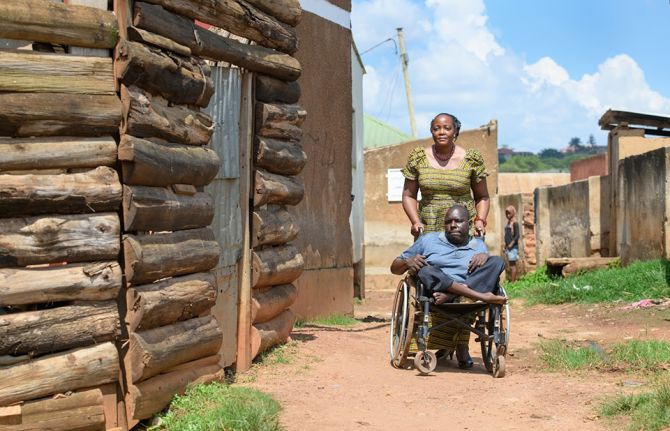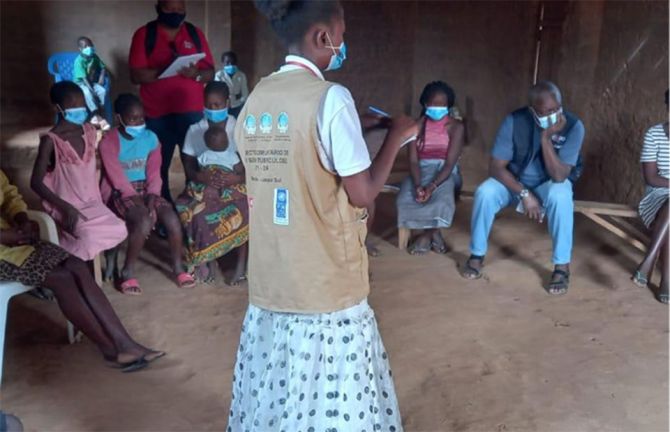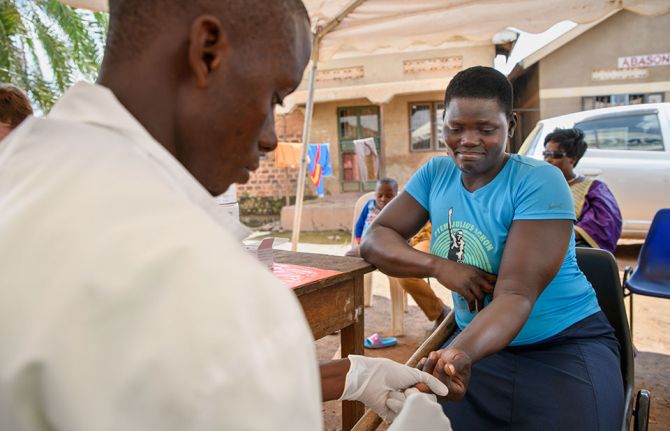
Feature Story
New policy brief on disability and HIV
08 April 2009
08 April 2009 08 April 2009
The new policy brief explores the links between HIV and disability and makes recommendations for policy change.
Credit: WHO/Asis Senyal
An estimated 650 million people, or 10% of the world’s population, have a disability. Although people with disabilities are found within the populations at higher risk of exposure to HIV, not much attention has been paid to the relationship between HIV and disability.
For this reason, the Joint United Nations Programme on HIV/AIDS (UNAIDS), the World Health Organization (WHO) and the United Nations Office of the High Commissioner for Human Rights (UNOHCHR) have collaborated on a policy brief that explores the links between HIV and disability and makes recommendations for policy change.
This policy brief discusses the actions needed to increase the participation of persons with disabilities in the HIV response and ensure they have access to HIV services which are both tailored to their diverse needs and equal to the services available to others in the community.
Evidence shows that people with disabilities are at the same or greater risk of HIV infection as non-disabled people. Due to insufficient access to appropriate HIV prevention and support services, persons with disabilities may engage in behaviours which place them at risk of HIV infection, such as unprotected heterosexual or male-to-male sex (including in the context of sex work) and injecting drug use.
The policy brief states that a large percentage of persons with disabilities experience sexual assault or abuse during their lifetime, with women and girls, persons with intellectual impairments and those in specialized institutions, schools or hospitals being at particularly high risk. There is also evidence that in some cultures, persons with disabilities are raped in the belief that this will “cure” an HIV-positive individual.
Persons with disabilities may not benefit fully from HIV and related sexual and reproductive health services because services offered at clinics, hospitals and in other locations may be physically inaccessible, lack sign language facilities or fail to provide information in alternative formats such as Braille, audio or plain language. Also, service providers may lack knowledge about disability issues, or have misinformed or stigmatizing attitudes towards persons with disabilities.
As stated in the 2006 Convention on the Rights of Persons with Disabilities, persons with disabilities have the right to participate in decisions which affect their lives, and should be fully involved in the design, implementation and evaluation of HIV policies and programmes. This is the best way of ensuring these policies and programmes are responsive to their needs.
The policy brief on Disability and HIV calls for HIV services to be inclusive of persons with disabilities. It makes recommendations to governments, civil society and international agencies to eliminate physical, information and communication, economic and attitudinal barriers not only to increases access to HIV programmes, but to assist people in accessing broader health and social services.
Right HAnd Content
Cosponsors:
Feature stories:
Disability and HIV in Jamaica (08 September 2008)
Publications:
Policy brief: Disability and HIV (pdf, 207 Kb)
Related
 Towards a life of dignity for people living with disabilities
Towards a life of dignity for people living with disabilities

15 February 2022


